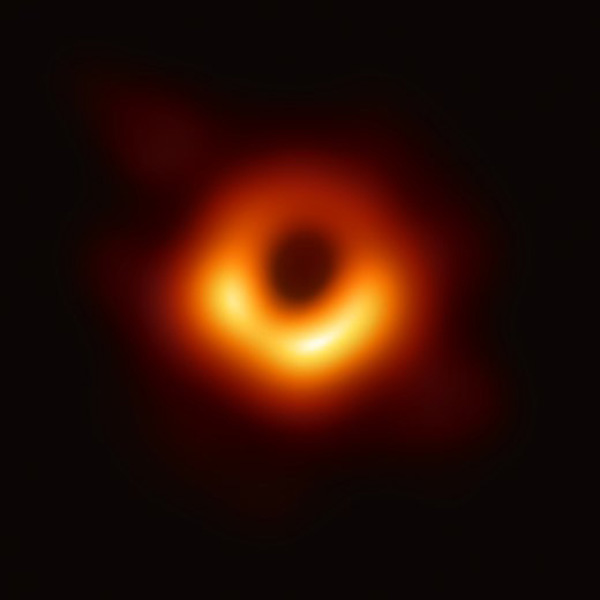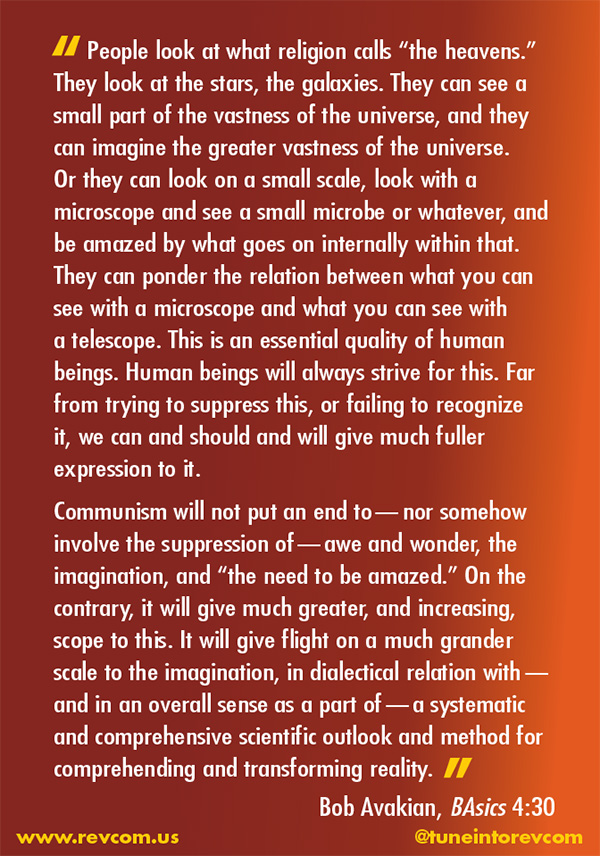Correspondence on Science, Humanity, and Seeing the “Unseeable”:
“... the kind of scientific energy that COULD and SHOULD and MUST be released from the constraints of nations and borders...”
| revcom.us
Editors’ Note: We received this response from a reader, and thought it insightful and important to share excerpts. The reader points out this example of international collaboration around capturing the image of a Black Hole as a “... glimmer of the kind of scientific energy that COULD and SHOULD and MUST be released from the constraints of nations and borders...”
Thank you to revcom for publishing the letter from a reader which you introduced with the title “Science, Humanity, and Seeing the ‘Unseeable’” about the astounding and beautiful scientific accomplishment of the creation of an image of the black hole horizon on April 10. As the letter writer recounts, over 200 scientists in 40 countries gathered and combined massive amounts of data from eight observatories spanning the globe, essentially creating an Earth-sized radio telescope (the project is called the Event Horizon Telescope or EHT). The massive data was processed to reveal the image we all saw. The April 10 “reveal” press conferences were held simultaneously, in several languages, in Washington, Brussels, Santiago, Shanghai, Taipei, and Tokyo.
The letter published by revcom was by far the best reporting I read in trying to understand this deeply awe-inspiring breakthrough and its implications for humanity’s ability to scientifically understand the universe.
One thread that ran through a few of the questions, answers, and comments during the press conferences that I watched (parts of the National Science Foundation-hosted conference in Washington, DC, and the European Union-hosted conference in Brussels) deserves some mention and appreciation.
Ana Humphrey, a public high school student at T.C. Williams High School in Alexandria, Virginia, (and the winner in March of the $250,000 Regeneron Science Talent Search grant for her research on exoplanets, that is, planets outside our solar system), asked the following at the Washington, D.C. press conference:
[T]his is obviously an incredible feat of global collaboration in the scientific community, and do you see a model for science going forward? If so, what are the challenges and what are this the things we can hope to accomplish?
Shep Doeleman, Director of the Event Horizon Telescope, answered:
That is a great question. It [VLBI, very-long-baseline interferometry, the technology that enables observatories around the world to collect and combine data to produce high quality imagery] is designed by its very nature [to be] cross-border activities, we don’t pay attention to where the telescopes are, just that they are high enough in command by scientists that share a common vision. In that sense, we built this team that is a 200+ member team by selecting experts from everywhere. I think it is a very good model for how we can do distributive science. We have published papers with people that we have never met before, but we consider them our true and trusted colleagues. That happens because we have the ability to reach out and form a distributed network of scientists. I think it is a good model.
It struck me that the creation of this extraordinary scientific breakthrough through science that was literally, geographically, international and that involved scientists across the globe, also revealed a glimmer of the kind of scientific energy that COULD and SHOULD and MUST be released from the constraints of nations and borders ... to solve very difficult problems of saving the Earth itself from the accelerating environmental disaster caused by the catastrophic global competition for profit, and to greatly expand collective human knowledge of, and scientific interaction with, the universe. Humanity, and the Earth, urgently need the revolutions that would in fact transcend borders as nothing more than expressions of archaic and barbaric divisions among people and totally unnecessary barriers to science.
Read also
Science, Humanity, and Seeing the “Unseeable”

The recently-released image of a black hole in the center of the galaxy Messier 87.
Get a free email subscription to revcom.us:


